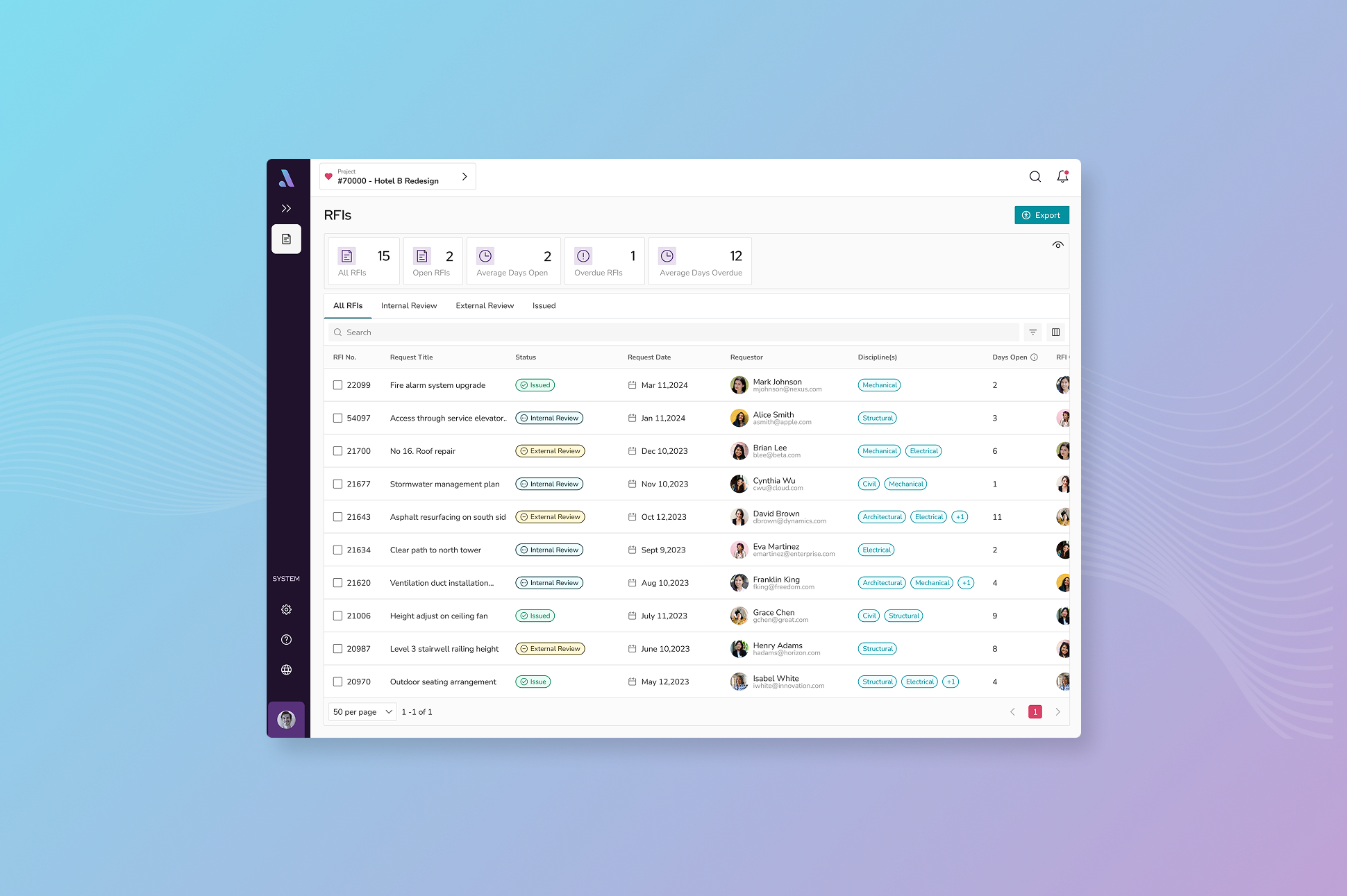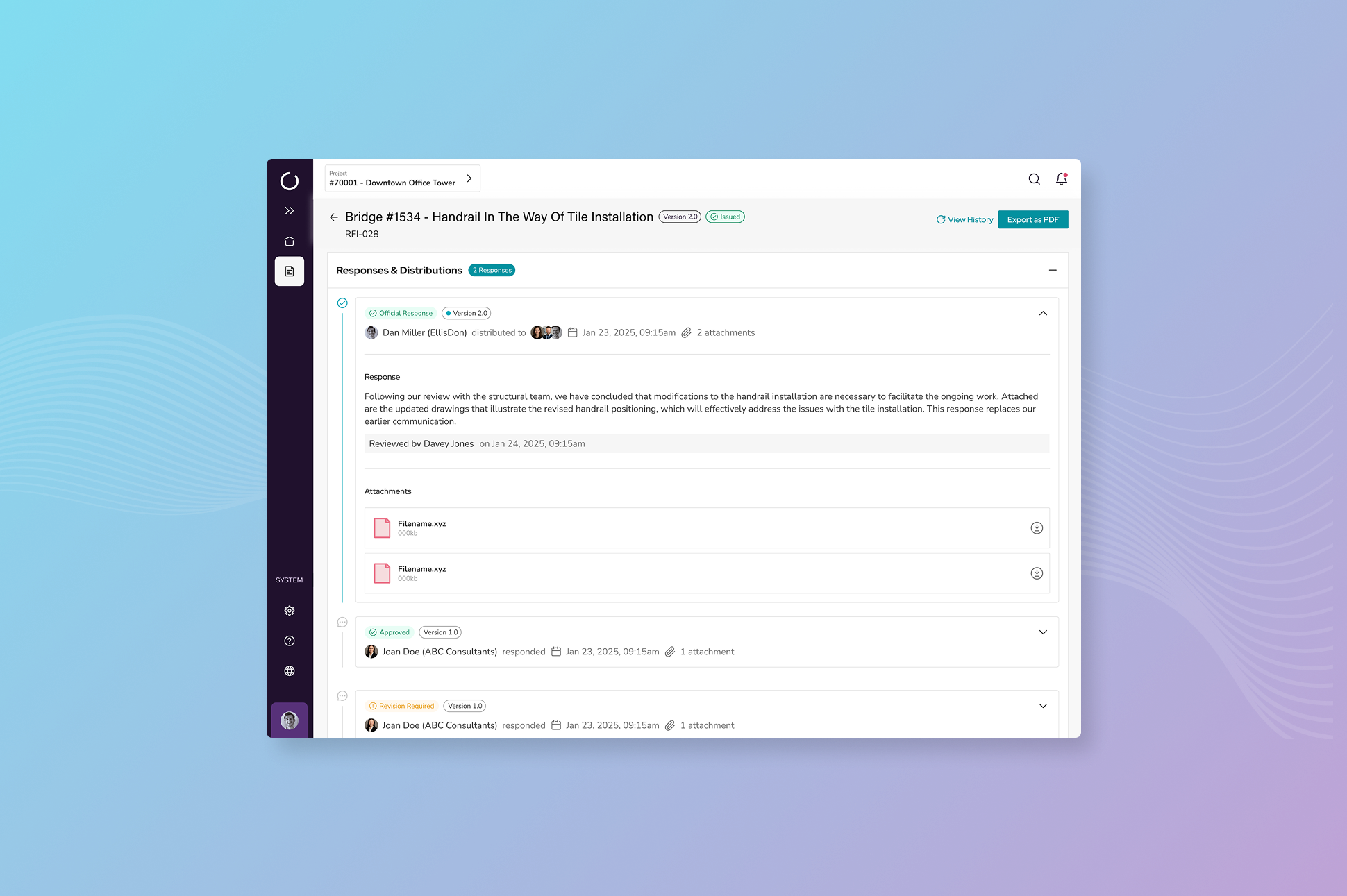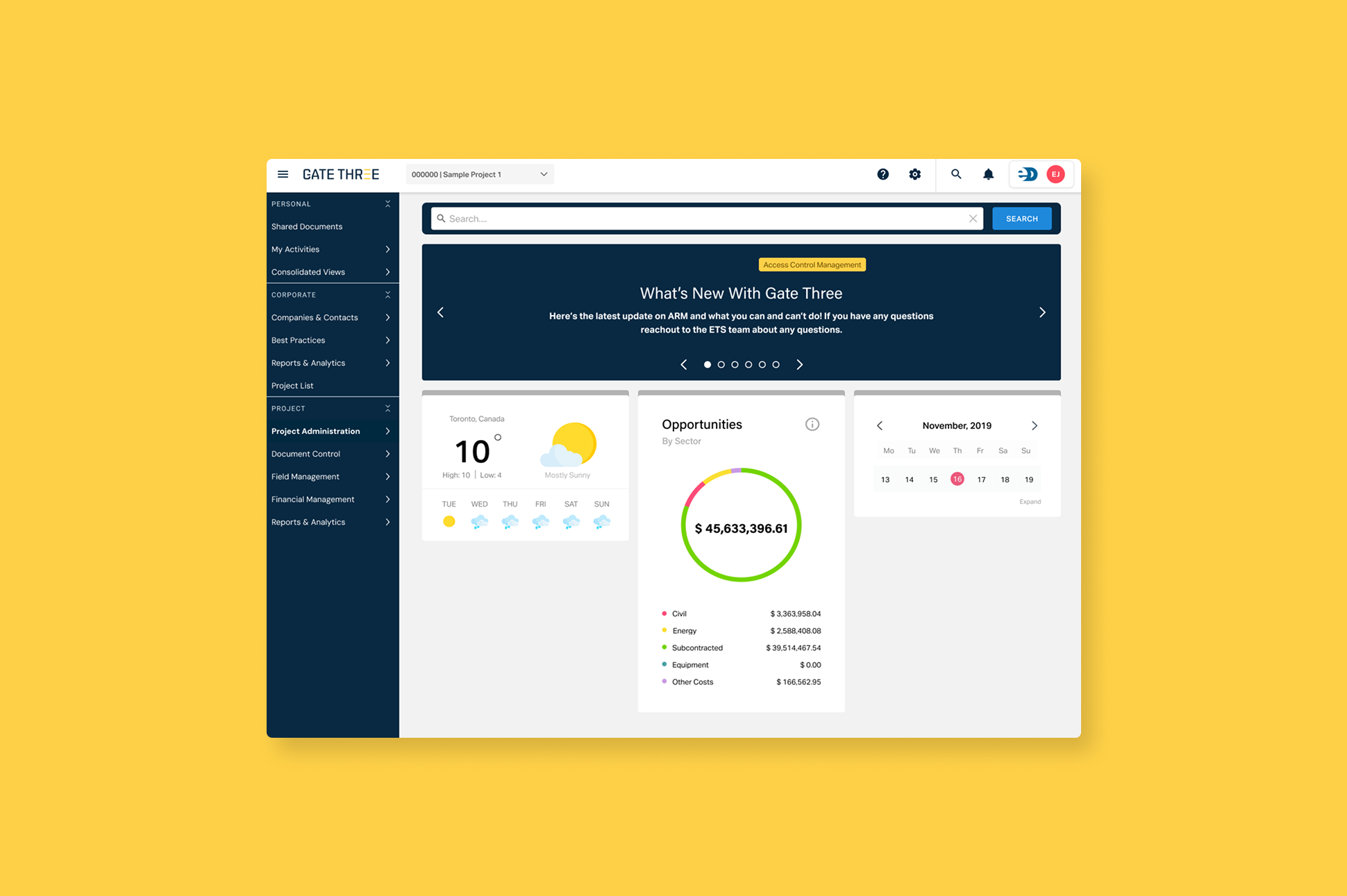01 / Redesigning the Request For Information Process
View Live Website
Simplifying a complex document workflow through research-driven design.
Project Type
Software Used
Client
Research Methods
Overview
An RFI (Request for Information) is a key tool in construction used to clarify design details and resolve issues between contractors, consultants, and owners. It ensures questions are formally documented, responses are shared with the right people, and work can move forward without delay. Since responses often involve multiple stakeholders and may require further clarification, the RFI process must support transparency, collaboration, and accountability to keep projects on time and on budget.

Problem
The legacy RFI system limited collaboration, resulting in bottlenecks, miscommunication, and inconsistent records. Only internal users could access the tool, so communication with external consultants had to be manually copied from emails—often after the fact—making the process error-prone and fragmented. The workflow itself was rigid, with fixed assignees and stages that couldn’t be updated as the RFI evolved. This inflexibility caused delays when consultants were unavailable or when additional input was needed. Responses weren’t tracked at the individual level, making it difficult to monitor accountability or gather insights—such as how long it takes a specific consultant to respond—for future optimization.
Discovery & Research
- Stakeholder interviews (project managers, document coordinators, consultants, executives, legal teams who process insurance claims based on RFIs) to identify pain points and inefficiencies
- Understanding of current RFI creation and tracking processes
- Review of RFI email threads and auditing their corresponding RFIs logged in the system
- Heuristic evaluation of the existing interface
Key Insights
- Users needed flexibility to adapt RFIs to accurately reflect the back and forth of a request's lifecycle
- Lack of integrated communication tools created fragmented, inaccurate record keeping
- PMs wanted clearer visibility into who had the RFI at each stage and for how long
- Executive teams were seeking data to assess consultant responsiveness and risk
User Journey Mapping
We mapped the full lifecycle of an RFI, from start to resolution, identifying any potential inefficiencies. By comparing the current journey with an ideal future state, we identified key opportunities:
- Empowering field teams to create RFIs on the spot, rather than retroactively
- Providing visibility into RFI status and history
- Reducing reliance on off-platform communication (for easier auditing)
- Centralizing information in a format usable by all stakeholders
.png)
Design Approach
Wireframes & Flows:
- Built wireframes that prioritze quality data entry with low cognitive load
- Used conditional logic and field validations to ensure complete RFI submission
Key UX Enhancements:
- Redesigning the document's workflow engine to be more flexible and accommodate changes
- Incorporated clear document status indicators
- Redesigned the RFI submission form to include better categorization (users can now add custom labels to RFIs that help them sort and sift through RFIs for a project)
- Redesigned the RFI landing page (table of all RFIs on a project) to include filtering, sorting, saved views, and more functionality to help document coordinators manage RFIs on a project
- Built email integration and notification system to eliminate double entry of consultant responses and provide updates to relevant parties
- Integrated with our platform's internal design system for visual consistency

Cross-Team Collaboration
As the dedicated UX designer on this project, I worked across three development and product teams to coordinate UX research, align technical feasibility with design strategy, and advocate for user needs. Other teams involved were the communications product team, who were handling the platform's email service, as well as the workflow engine team, who handled rebuilding the workflow engine for documents in order to allow for that flexibility in stage/assignees and capture data related to time the RFI spent in each stage of its workflow.

Outcome & Impact
- Reduced administrative burden on internal staff
- Improved quality and consistency of RFI data (tracking response times, quality of responses, categorizing various RFIs on projects for easier readablity, etc)
- Greater accuracy in tracking RFI resolution time and tracking consultant accountability
- Internal staff reported less time spent on email triage and manual entry
- Created a foundation for further collaboration tools between internal and external stakeholders for our platform as a whole
Reflection
This project highlighted how internal tools can unintentionally silo communication and create inefficiencies, especially when key collaborators are excluded from the process. By addressing both the user experience and workflow design, we were able to shift RFI handling from reactive to proactive.
Redesigning the RFI tool pushed me to analyze an experience with a digital product more holistically, considering offline processes that are part of the reality of the construction environment.


